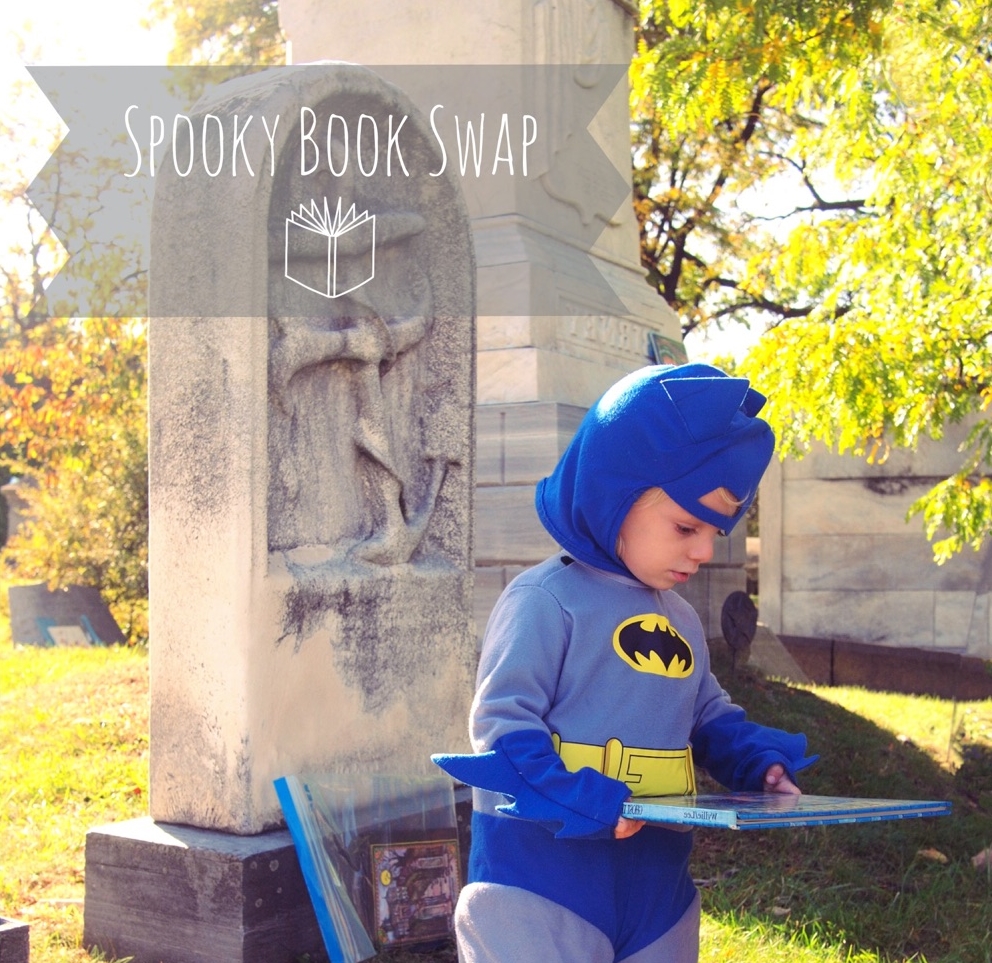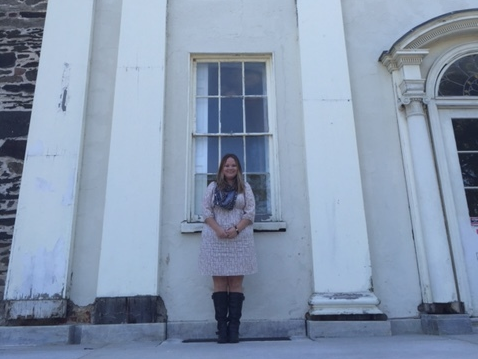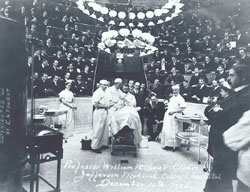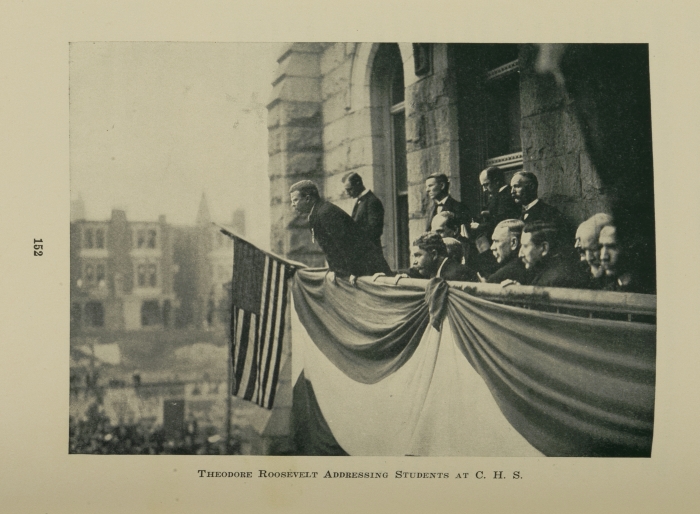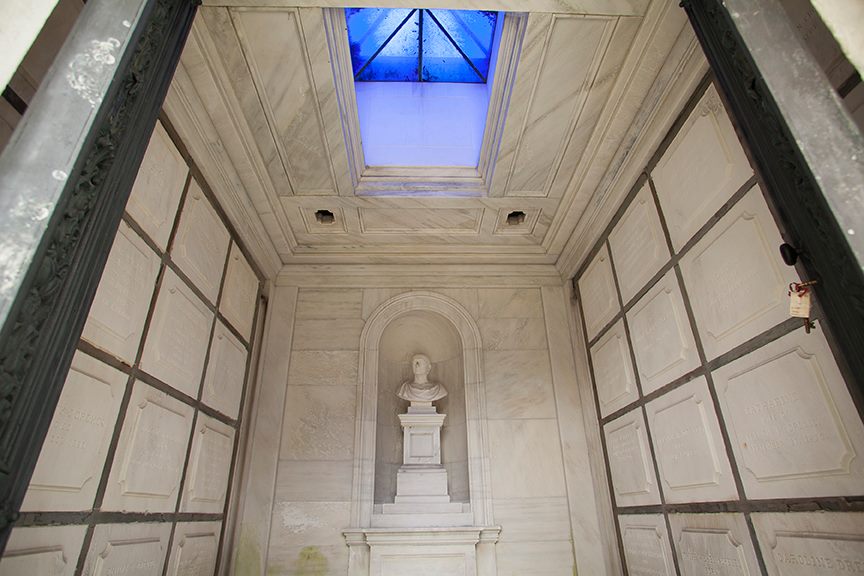When the Tesla Roadster was released in 2008, the car was praised as a remarkable feat of engineering that could change transportation in the 21st century. As innovative as the Roadster may have been, it was far from the first electric car to be developed. That award goes to the 1894 Electrobat and its creator, Pedro G. Salom, who is buried at The Woodlands Cemetery.
In the late nineteenth century, Pedro Salom, an electrochemical engineer, teamed up with inventor Henry G. Morris under the common goal of creating the world’s first battery-powered automobile. Both men had been involved in the electrification of urban streetcars, which eliminated the messes and hassles of animal-powered public transportation. Using the same lead-acid batteries that powered the new streetcars, Salom and Morris developed the first prototype of their electric automobile in a mere two months and patented the vehicle on August 31, 1894.
Salom and Morris in an early Electrobat (1896).
When the two inventors took their electric car out for its first test run that summer, they had to receive a special permit from City Hall. Accompanied by a police officer tasked with conducting carriages away from the automobile (which was liable to frighten horses), the car made its way down busy, cobblestoned Broad Street. The precautions taken on this first ride were called for: the first model of the Electrobat was unwieldy and unpredictable. Looking something like a cross between a Radio Flyer wagon and an equipage, the car was encumbered with a battery that weighed a full 1,600 pounds.
However, within a year, Pedro Salom and Henry Morris had refined their original model significantly. The fourth prototype of the car had a 350 pound battery, a fraction of the weight of the original, which allowed the steel wheels of the first Electrobat to be replaced with pneumatic tires. Armed with cutting-edge technology, the engineers founded the Morris and Salom Electric Wagon and Carriage Company and began promoting their invention as a modern kind of hansom cab.
An Electrobat cab, ready to navigate the bustling streets of Manhattan.
Before long, the company had dozens of Electrobat cabs operating in New York City, and was effectively competing with horse-drawn cabs in Philadelphia and Boston as well. The addition of electric automobiles to the late nineteenth century urban environment caused quite a stir. One newspaper claimed that “no modern development is fraught with greater possibilities than the motor-propelled road vehicle.” Another acknowledged the growth of Morris and Salom's company, but maintained that "the American mechanical public at large is viewing the horseless carriage a dream of the dreamers."
Memorial for Pedro Salom and Emma Grotjan, parents of Pedro Salom, the inventor of the first battery powered car.
Automotive technology may not be the first thing that comes to mind when considering The Woodlands but a great contributor to this field is buried in the cemetery. Long before twenty first century iterations of the electric car, Salom and his Electrobat changed the face of urban transportation and added to the Philadelphia’s list of innovations in science and engineering.
By Rive Cadwallader
To learn more about the Electrobat, see:
Bruce Duffie. "Charging Up the Electric Cabs." http://www.kcstudio.com/colcharging.html
Bruce Duffie. "Prologue: Preparing the way for the Columbia cars, and the formation of the Electric Vehicle Company." http://www.kcstudio.com/electrobat.html
Alexis C. Madrigal. "The Electric Taxi Company You Could Have Called in 1900." The Atlantic (March 2011). http://www.theatlantic.com/technology/archive/2011/03/the-electric-taxi-company-you-could-have-called-in-1900/72481/





